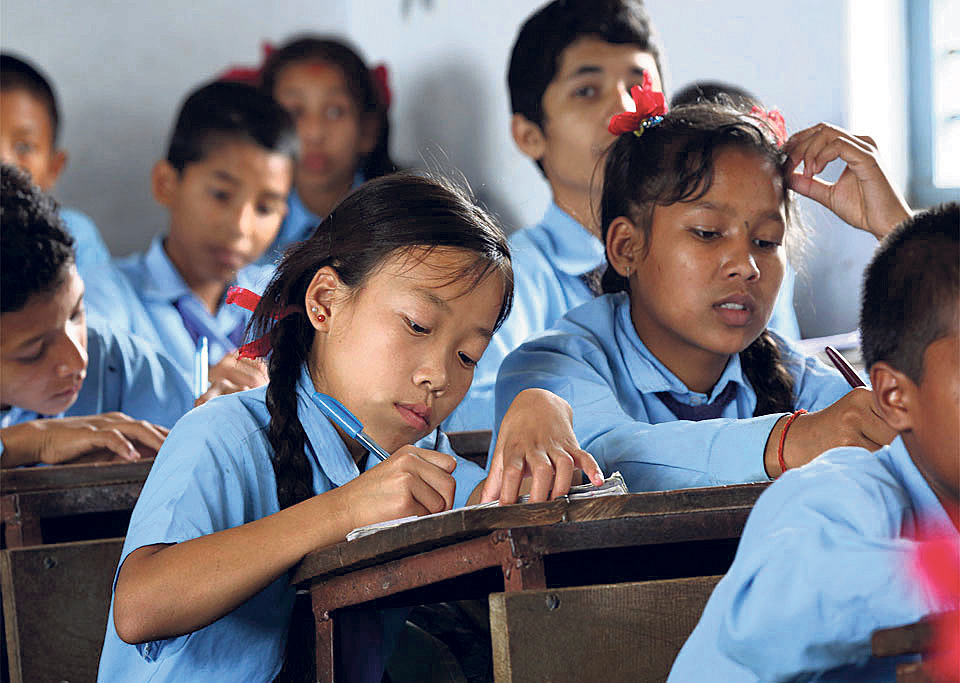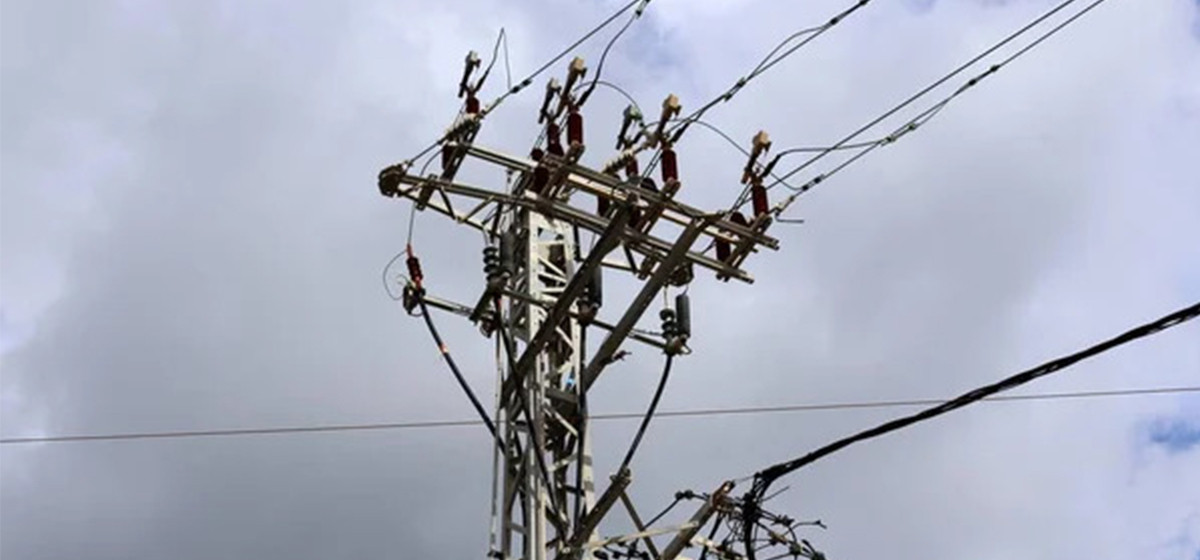
OR
Opinion
Inclusive Education in Nepal: Challenges and Possible Solutions
Published On: June 20, 2023 09:00 AM NPT By: Jalasa Sapkota

The concept of inclusive education embodies a holistic and nuanced approach, with the primary objective of fostering parity and fairness in accessing education of the highest quality for individuals, irrespective of their diverse abilities or disabilities. This approach recognizes and upholds the inherent right of every individual, including those with disabilities, to be integrated into mainstream educational settings and receive the necessary support to fully engage and excel in their educational pursuits. In the context of Nepal, the provision of inclusive education holds immense significance, particularly for individuals with disabilities. By embracing the principles of inclusive education, Nepal is striving to establish an educational framework that not only ensures equal opportunities for individuals with disabilities to acquire knowledge, but also facilitates the development of their skills and promotes their overall well-being.
Broad spectrum of national and international frameworks
The constitution of Nepal, ratified in 2015, establishes education as a fundamental right and emphasizes the importance of ensuring an education system that is inclusive and free from discrimination based on race, gender, language, or disability. While the constitution delegates the responsibility of providing and managing education for children with disabilities to local governments, it remains unclear how such provisions will impact the goal of inclusive education. The decentralization of political and administrative systems, including the education system, has been transferred to local governments. Students with disabilities, as well as those from economically disadvantaged backgrounds, remote areas, marginalized castes, and disadvantaged ethnic groups face disproportionate challenges in accessing education. There exists a significant gap in access to education for these groups.
The National Education Policy of 2019 (2076 BS) contains contradictory provisions that contradict the principles outlined in the Inclusive Education Policy of 2017. The current National Education Policy supersedes these previous policies and includes both inclusive and special education under its Policy number (G). However, the policy fails to distinguish adequately between special education and inclusive education, thereby non-compliant with Article 24 of the Convention on the Rights of Persons with Disabilities (CRPD). Article 24 of the CRPD recognizes the right of persons with disabilities to education. It emphasizes the importance of providing an inclusive education system at all levels, ensuring equal opportunities and non-discrimination. Inclusion is grounded in the fundamental human right to education for all, as enshrined in the Universal Declaration of Human Rights of 1948.
Nepal has made a commitment to the Incheon Declaration and Framework for Action, which aims to implement Sustainable Development Goal 4 on quality education, as issued by the World Education Forum organized by UNESCO in Incheon, South Korea. In line with this commitment, the Government of Nepal has incorporated its policy priorities for educational development in its Fifteenth Plan, with explicit targets for ensuring quality and equitable education for learners with disabilities.
Challenges and Possible Solutions
Inclusive education in Nepal faces several challenges that hinder its effective implementation. These challenges stem from various social, economic, and cultural factors, making it crucial to identify and address them to ensure equal access to quality education for all students. Here are some of the key challenges and potential solutions for promoting inclusive education in Nepal:
Limited Infrastructure and Resources
Challenge: Inadequate infrastructure and resources, such as accessible classrooms, ramps, assistive devices, and learning materials, pose significant barriers to inclusive education.
Solution: The government should invest in improving infrastructure and allocate sufficient resources to create an inclusive learning environment. This includes constructing accessible buildings, providing assistive technologies, and ensuring the availability of inclusive teaching materials.
Attitudinal Barriers and Stigma
Challenge: Deep-rooted societal attitudes and misconceptions about disabilities contribute to stigma and discrimination, leading to exclusion and marginalization of students with disabilities.
Solution: Raising awareness and conducting sensitization programs for teachers, students, parents, and the broader community is essential to change attitudes towards disability. This can be achieved through inclusive education campaigns, training programs, and community engagement initiatives.
Teacher Preparedness and Support
Challenge: Many teachers lack the necessary training and skills to effectively support diverse learners in inclusive classrooms. Limited professional development opportunities and inadequate support systems further exacerbate this challenge.
Solution: Providing comprehensive pre-service and in-service training programs for teachers on inclusive pedagogies, differentiated instruction, and classroom management can enhance their capacity to cater to the diverse needs of students. Establishing mentorship programs and support networks can also help teachers receive ongoing guidance and support.
Inadequate Policy Implementation
Challenge: Although Nepal has policies and legal frameworks in place to promote inclusive education; there is often a gap between policy formulation and effective implementation at the grassroots level.
Solution: Strengthening the monitoring and evaluation mechanisms to ensure policy compliance and accountability is crucial. Regular assessments, data collection, and reporting can help identify implementation gaps and inform necessary interventions. Collaboration between the government, NGOs, and civil society organizations is essential for effective policy implementation.
Socioeconomic Disparities
Challenge: Economic disparities and poverty can restrict access to education for marginalized and economically disadvantaged students, perpetuating inequalities.
Solution: Implementing targeted scholarship programs, fee waivers, and financial support systems can help mitigate the financial barriers that hinder inclusive education. This requires collaboration between the government, non-profit organizations, and donors to ensure equitable access to education for all.
Inclusive Curriculum and Assessment
Challenge: The curriculum and assessment methods often fail to accommodate the diverse learning needs and abilities of students, excluding those with disabilities or special educational needs.
Solution: Developing a curriculum framework that incorporates inclusive principles and promotes flexible learning pathways can address this challenge. Providing reasonable accommodations and alternative assessment methods can enable students with disabilities to demonstrate their knowledge and skills effectively.
Lack of Human Resources
Challenge: The shortage of qualified special educators, itinerary teachers, therapists, and other professionals poses a significant challenge to inclusive education in Nepal. The lack of human resources hinders the provision of necessary support and individualized interventions for students with disabilities.
Solution: To address this challenge, it is crucial to invest in the recruitment and training of special educators, itinerary teachers, therapists, and other professionals. This can be done by establishing specialized training programs and incentivizing individuals to pursue careers in inclusive education. Additionally, providing ongoing professional development opportunities and creating support networks for these professionals can enhance their effectiveness in meeting the diverse needs of students.
Lack of Budgeting and Resource Allocation
Challenge: Insufficient budget allocation and resource distribution for inclusive education limit the availability of necessary services, assistive technologies, and inclusive learning materials.
Solution: The government should prioritize inclusive education in budget planning and allocate adequate funds to support its implementation. This includes investing in the procurement of assistive devices, accessible technology, and materials that cater to diverse learning needs. Collaborating with international organizations and seeking external funding can also supplement the budgetary constraints and ensure adequate resources for inclusive education.
Lack of Adoption of Universal Design for Learning (UDL) Pedagogy
Challenge: Many educators and schools in Nepal have not fully embraced Universal Design for Learning (UDL) principles, which aim to provide multiple means of representation, engagement, and expression to meet the diverse learning needs of all students.
Solution: Promoting the adoption of UDL-based teaching pedagogy requires comprehensive training programs and professional development opportunities for educators. Integrating UDL principles into teacher education programs and curriculum development processes can help mainstream inclusive practices and make education more accessible for students with intellectual and autism disabilities.
Conclusion
The transformative power of inclusive education in Nepal is undeniable. Its ability to foster equality, promote social inclusion, and ensure quality education for individuals with disabilities holds immense potential. However, the road to effective implementation is not without challenges. Despite this, embracing inclusive education will create a system that celebrates diversity, fosters equity, and empowers individuals with disabilities to actively participate in society and contribute to the nation's development. Inclusive education is more than a matter of rights; it serves as a catalyst for social progress and national prosperity. Thus, it is crucial that concerted efforts are made to translate the vision of inclusive education into a tangible reality in Nepal.
You May Like This

Aug 21: 6 things to know by 6 PM
Your daily dose of missed important news of the day. ... Read More...

Challenges to ecosystems and solutions discussed
KATHMANDU, March 15: Challenges to ecosystems and ways to overcome such challenges was discussed at a regional symposium held in Kathmandu... Read More...

Helping women re-envision a better Nepal: Women LEAD Nepal
KATHMANDU,March 7: Women LEAD Nepal started as an idea that women and girls could change the trajectory of Nepal’s future and... Read More...






Just In
- Sita Air flight to Ramechhap returns to Kathmandu due to hydraulics issue
- Man found dead in Dhanusha
- Gold prices decreases by Rs 400 per tola
- Ilam-2 by-election: UML candidate Nembang secures over 11,000 votes
- High-voltage power supply causes damage to 60 houses
- Bajhang-1 by election: UML leads again
- Lumbini and Koshi likely to experience stormy conditions
- Bajhang-1 by-election: NC maintains narrow lead over UML











Leave A Comment